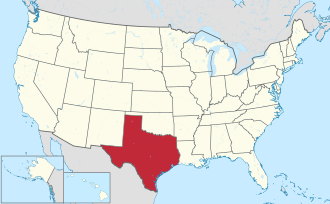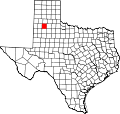Hale County | |
|---|---|
 The Hale County Courthouse in Plainview | |
 Location within the U.S. state of Texas | |
 Texas's location within the U.S. | |
| Coordinates: 34°04′N101°50′W / 34.07°N 101.83°W | |
| Country | |
| State | |
| Founded | 1888 |
| Seat | Plainview |
| Largest city | Plainview |
| Area | |
• Total | 1,005 sq mi (2,600 km2) |
| • Land | 1,005 sq mi (2,600 km2) |
| • Water | 0.1 sq mi (0.3 km2) 0.01% |
| Population (2020) | |
• Total | 32,522 |
• Estimate (2024) | 31,953 |
| • Density | 32/sq mi (12/km2) |
| Time zone | UTC−6 (Central) |
| • Summer (DST) | UTC−5 (CDT) |
| Congressional district | 19th |
| Website | halecounty.org |
Hale County is a county located in the U.S. state of Texas. As of the 2020 census, its population was 32,522. [1] Its county seat is Plainview. [2] The county was created in 1876 and organized in 1888. [3] It is named for Lt. John C. Hale, [4] a hero of the Battle of San Jacinto.
Contents
- History
- Geography
- Major highways
- Adjacent counties
- Demographics
- 2000 census
- Communities
- Cities
- Town
- Census-designated place
- Unincorporated community
- Ghost town
- Politics
- Education
- See also
- References
- External links
Hale County comprises the Plainview, Texas micropolitan statistical area.
